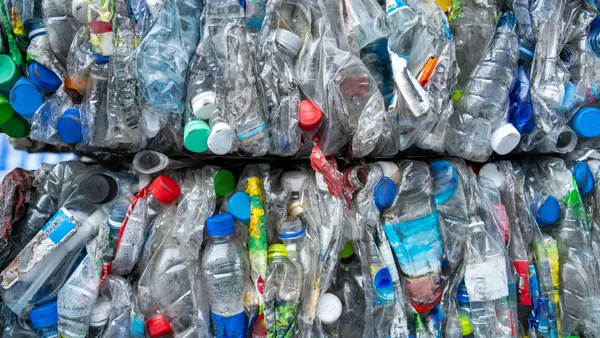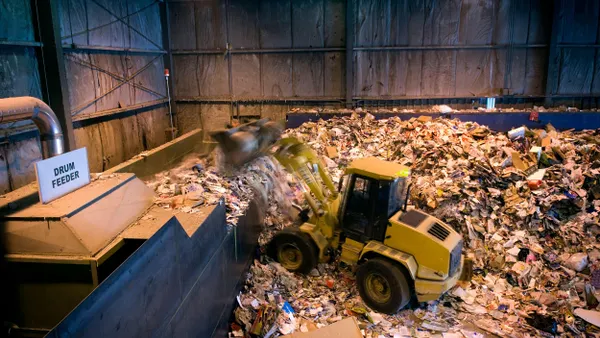Dive Brief:
- The Plastics Industry Association recently launched a campaign meant to tout the benefits of plastic recycling. The digital ad effort is aimed at government officials, elected lawmakers and brands.
- The association expects to spend more than $1 million on its “Recycling is Real” campaign, which is meant to show that “recycling is a vital link of the sustainability and circularity chain” and help policymakers “make more well-informed decisions about recycling resources for their constituents.”
- The campaign aims to counteract messages from some environmental groups, including Beyond Plastics and Greenpeace, that have criticized plastics recycling as ineffective and misleading. Such groups support efforts to stop further plastic production.
Dive Insight:
Plastics’ new outreach to legislators and brands underscores the tensions between industry and advocacy groups as more and more state lawmakers introduce bills that could impact plastic recycling and production. Plastics management has also been the subject of numerous federal hearings and bills in recent years.
During a press call announcing the ad campaign last week, Plastics CEO Matt Seaholm said brands are making major decisions about recycled content and packaging formats based on a variety of influences such as local laws and customer feedback, and they are facing “pressure being put on them by anti-recycling organizations” to choose non-plastic alternatives.
The campaign, which offers videos from companies like Novolex and Ultra-Poly, is expected to include email blasts and other outreach. “Our job as the Plastics Industry Association is to show that we can reprocess this material. We can turn it into usable material products after it's been used once or twice, maybe multiple times. That's the job of this initiative,” he said.
Seaholm pointed to a recent high-profile extended producer responsibility for packaging bill in New York as an example of how strong messaging for and against plastic recycling can affect a bill’s outcome. The bill, which would have required producers to reduce packaging and prohibited chemical recycling from being considered a recycling strategy for EPR purposes, failed to pass. A coalition of plastic industry groups opposed the bill, but environmental advocacy groups, including Beyond Plastics, saw the legislation as a meaningful way to reduce plastic pollution. Similar fights over such legislation have played out in other states this year.
Beyond Plastics called the Recycling is Real effort a “cynical new public relations campaign” that doesn’t address major problems with the U.S. recycling system for plastics.
“Year after year, plastics recycling has been an abysmal failure, clocking in at well under 10% recycling rate. I strongly support recycling; but plastic, as a material, is mostly not recyclable,” said Judith Enck, president of Beyond Plastics, in a statement. The U.S. EPA’s Facts and Figures report from 2018 says the average recycling rate for plastics was about 8.5%, but some types of plastic have varied rates.
Greenpeace is another group that has taken aim at the plastics industry’s current and past recycling campaigns. It issued a report in May stating that “plastics are inherently incompatible with a circular economy” and that brand commitments to use more recycled plastic are not making meaningful environmental strides. The report also outlined concerns that “dangerous chemicals” can find their way into recycled plastics.
In the meantime, plastics recycling discussions will continue to take place at the state, national and international level. Policymakers expect states to continue to introduce new EPR legislation for packaging next year. The United Nations Environment Programme, which is in the process of negotiating an international, legally binding plastic pollution agreement, recently released a draft proposal that includes several proposed approaches to managing plastic through various recycling, EPR and other means.
The Federal Trade Commission is in the process of gathering feedback for how to update its Green Guides, a document for how to market environmental claims without being deceptive. Changes to that guidance could change the way brands choose or market their packaging.











